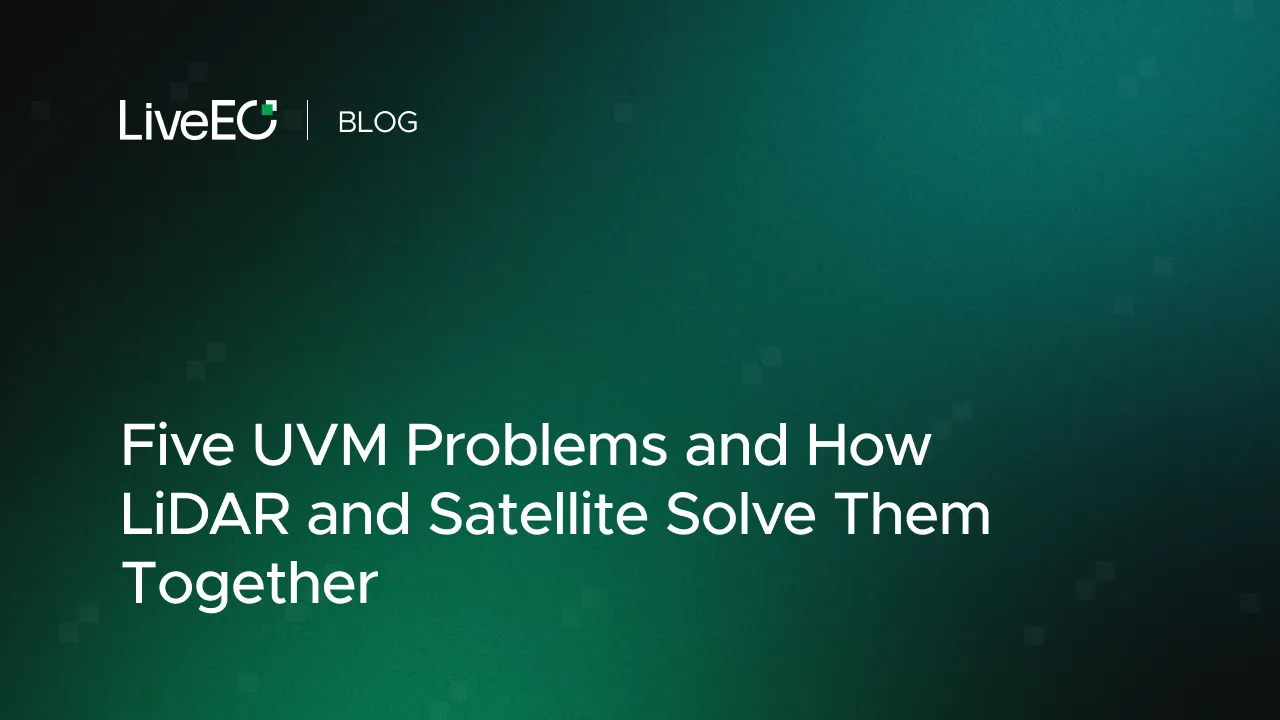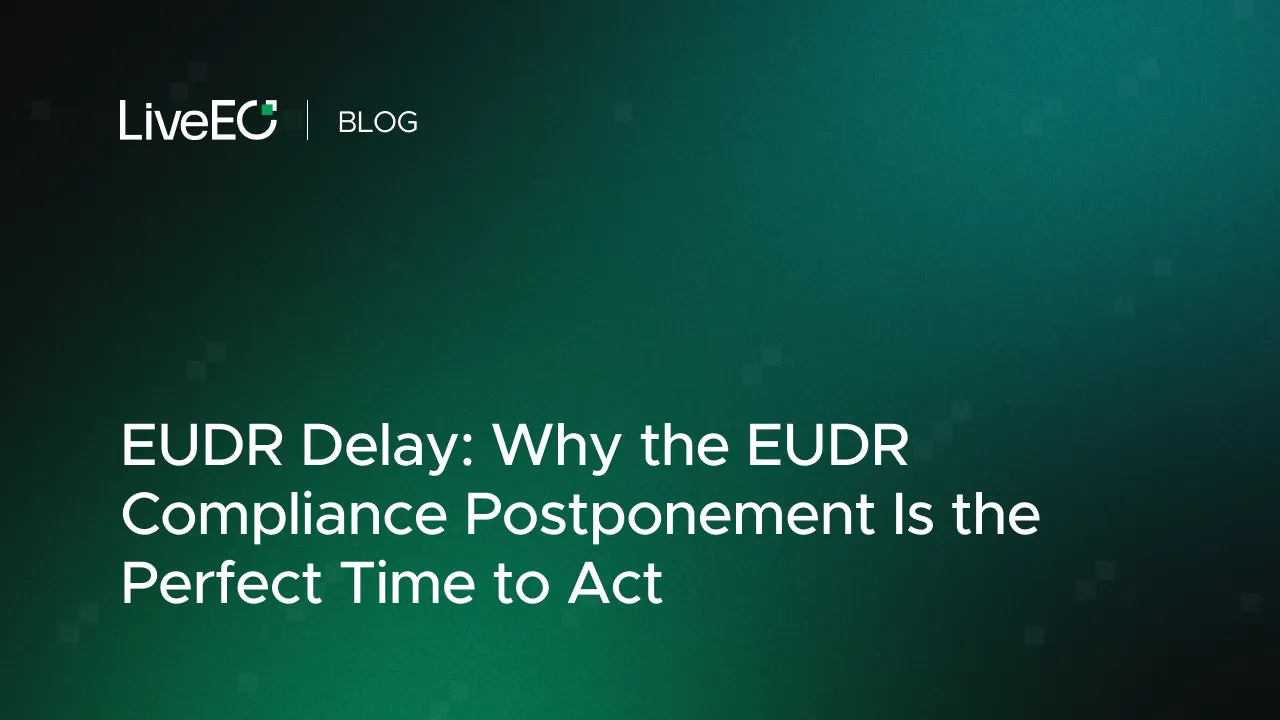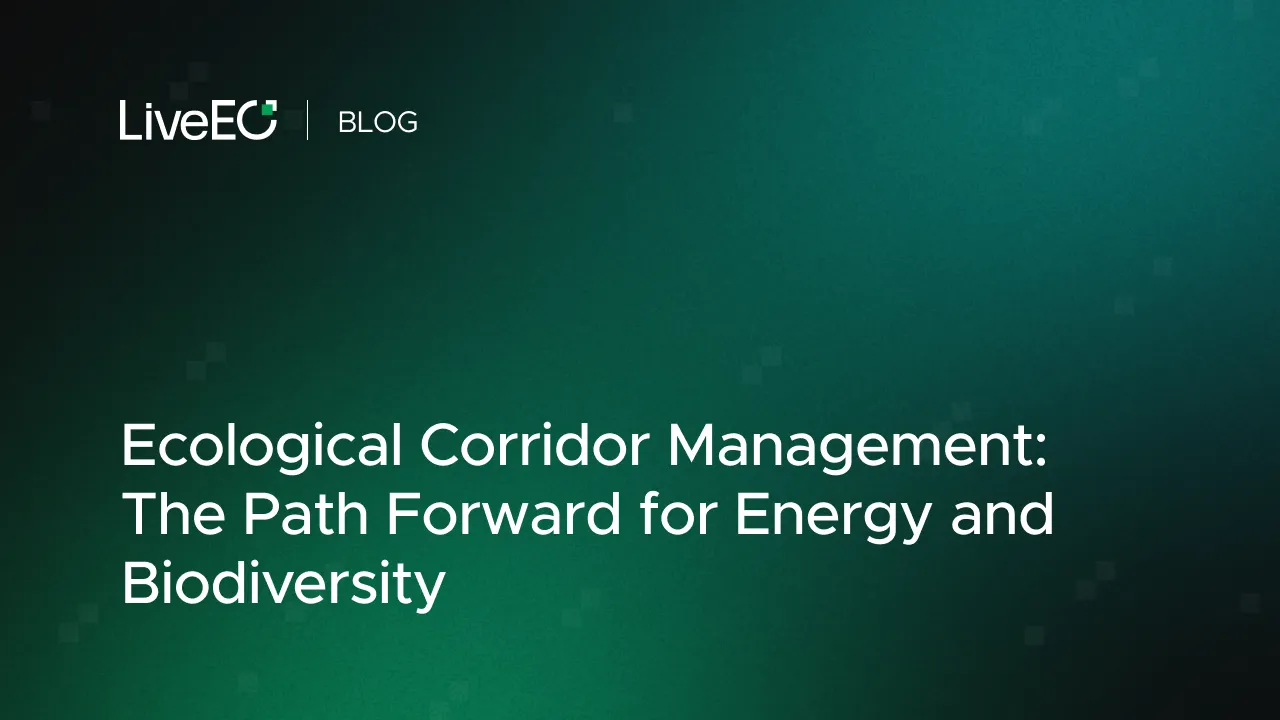While it might seem intuitive to focus on either LiDAR or Satellite Imagery for vegetation management programs, sometimes utilizing both can be beneficial. Vegetation management use cases for satellite and LiDAR grow as quickly as these technologies continue to advance.
1: Understanding the Big, and Small, Picture
As mentioned above, once a utility has accurately geo-referenced assets, determining their vegetation encroachment risk is a significantly simpler process. By performing a vegetation encroachment risk using satellite imagery first, utilities can gain a complete analysis of their ROW, and can focus their initial management efforts in the areas that contain the most risk. Within these high risk areas, utilities can then fly LiDAR systems (that contain both LiDAR and an RBG measuring capabilities) in order to get a better understanding of the risk. By flying LiDAR systems in just specific locations, utilities can stop wasting valuable time and resources (both personnel and fiscal) on low-risk areas.
2: Grow-In and Fall-In Threats
Another major risk faced by utilities is the threat of vegetation within and outside the ROW. LiDAR systems can provide high-resolution imagery, with an accuracy of > 10cm. Through the use of accurate modelling input data combined with LiDAR’s high resolution, outages caused by grow-ins have already been significantly reduced over the past few years. Our next goal, as an industry, should be to eliminate fall-ins and hazard trees.
As previously mentioned, LiDAR has a significantly higher level of resolution to help address grow-ins within the ROW, but this can also easily be applied to fall-ins within the ROW as well, helping utilities pinpoint trees and other vegetation that encroaches too closely to the line. But what about outside the ROW? Due to satellite imagery’s larger swatch path, it can help identify fall-in trees that are located outside the ROW. Since utilities typically do not have permission to remove fall-ins that remain outside the ROW, and blanket removal of all off-ROW danger trees would be expensive, having an understanding of the location of possible hazard trees outside the ROW could help save on hazard tree removal costs, reduce unplanned outages, and improve overall system reliability.
3: Identification of Hazard Trees
Another difficult problem faced by utilities are Hazard Trees. In order to determine which treesare hazard trees, not only is their vertical and horizontal encroachment need to be known, but also their vitality. Here, vegetation vitality information differs significantly between LiDAR and satellite imagery. Multispectral sensors that are typically a part of LiDAR systems, can provide vegetation vitality for singular trees, whereas satellite imagery can provide it for groups of trees. While LiDAR systems have fantastic spatial resolution, their analyses are typically conducted infrequently (typically every 4-5 years). When conducted so infrequently, these systems can only provide vitality points for that singular point in time, where as satellite imagery has an archive of data that can be used to produce a vegetation vitality map over multiple years; taking into account vegetation’s seasonality (for more information, please see this blog post). By including vegetation’s vitality, groups of trees that are not only a fall-in risk, but have also seen a deterioration in vitality can be identified. This additional knowledge allows utilities to locate and remove hazard trees before they become an issue.
4: Trees and Invasive Species
A less frequently discussed, but still vital issue that vegetation managers face concerns invasive Species. LiDAR systems are able to provide information on tree species at a tree level, since its resolution is higher. Since distribution networks tend to be located in more urban areas, with more of a mixed canopy, LiDAR systems might be better suited. For Transmission lines, or Distribution lines that are not densely located, satellite’s larger swath can help distinguish the tree species inside and outside the ROW. This information can be used by transmission utilities to narrow down crew work to focus specifically on tree groups with higher invasive species potential - i.e. ash trees via the Emerald Ash Borer).
{{inline}}
5: Inaccurate GIS Locations of Utility’s Assets
One of the largest issues faced by utilities when trying to integrate geospatial data into their vegetation management program, is not having an accurate map of their assets. LiDAR can help accurately locate and plot these assets. Additionally, one of LiDAR’s greatest values is its ability to accurately model and create PLS-CADD models. This information can then be leveraged to significantly improve vegetation encroachment risk analyses that are conducted by satellite companies.
Learn more about our Satellite-Based Vegetation Management Solution.
Get in touch!







